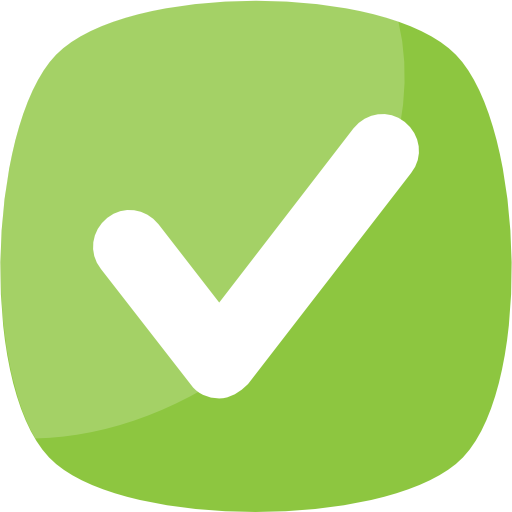Understand EU import rules, leverage the South Korea-EU trade agreement, and discover strategies to propel your export success.
Understanding EU Import Regulations
The EU maintains a unified set of regulations to ensure the safety, quality, and fair trade of imported goods. Understanding and complying with these regulations is essential for a seamless export experience from South Korea to the EU.
EU Customs
Procedures, documentation, and potential declarations are crucial to understand. Essential resources to explore include:
- The EU’s Customs Union website provides detailed information on customs procedures and regulations.
- Your freight forwarder or a specialised customs broker can assist with the specifics of your shipments and any required declarations.
Import Tariffs
These duties on your goods are often eliminated or reduced thanks to the Free Trade Agreement. However, it’s essential to determine the exact tariff rates applicable to your specific products. Here’s how:
The EU’s Access2Markets portal allows you to search for your product’s tariff code (HS code) and find the applicable tariff within the EU-South Korea FTA.
Product Safety Standards
EU regulations ensure consumer safety. Your products must align with these standards, which could require testing or certification. Relevant resources include:
- “Blue Guide” on the implementation of EU product rules
- Specific directives for your product category: These can be found on the European Commission’s website.
Labelling
To sell your products within the EU, you must meet precise labelling requirements (language, ingredients, origin, etc.).
EU regulations on the labelling and packaging of products are a valuable starting point.
Why Compliance Matters
Adhering to EU trade regulations isn’t just about avoiding penalties. It ensures your goods enter the EU smoothly and reach consumers without delay. Incorrect documentation or unmet standards can lead to costly hold-ups or even the rejection of your shipment.
Successfully Navigating the Export Process
Now that you understand the regulatory landscape, let’s turn theory into practice. Here’s your step-by-step guide to successfully exporting from South Korea to the EU:
Essential Export Documentation
- Commercial Invoice: The core document outlining the transaction between you and the buyer.
- Packing List: Detailed breakdown of shipment contents.
- Certificate of Origin: Proves your goods originate in South Korea (this may influence tariffs).
- Other Potential Documents: Depending on your products, you might need phytosanitary certificates, health certificates, etc.
Templates & Resources:
- South Korean Trade Promotion Agency (KOTRA) — Provides document templates and guidance
- European Commission: Access2Markets — Offers EU-specific requirements and forms.
Export Logistics: Finding the Right Partners
- Freight Forwarder: Choose one with EU market experience and expertise in your product type. Here’s where to find them:
- Industry Associations: Start with FIATA, the International Federation of Freight Forwarders Associations, or a national association within your target EU country (e.g., Germany’s DSLV — Bundesverband Spedition und Logistik).
- Specialised Directories: Explore Freightnet or FORWARDER Directory.
- Shipping Method: Evaluate sea freight (cost-effective, large shipments) and air freight (faster, perishable goods) based on your needs. Consider factors like:
- Urgency: How quickly do your goods need to arrive?
- Cost: Can your budget accommodate faster but pricier air freight?
- Product Type: Are your goods perishable or particularly fragile?
Finding EU Buyers
Industry Trade Shows: Attend Ambiente (Frankfurt, broad consumer goods focus) and Anuga (Cologne, major food and beverage trade show) to connect directly with potential buyers.
Online Marketplaces: List your products on platforms like, Europages. Optimize your listings with relevant keywords.
Partnerships: Consider working with EU-based distributors or agents. Seek them out through platforms like the EEN — Enterprise Europe Network.
Leveraging the South Korea-EU Free Trade Agreement
The South Korea-EU Free Trade Agreement (FTA) eliminates many barriers, enhancing your competitive position in the European marketplace. Let’s delve into how to maximize its benefits:
Reduced or Eliminated Tariffs
- Know Your Product’s Code: Determine your goods’ Harmonized System (HS) code to pinpoint accurate tariff reductions.
- Beyond Tariffs: The FTA also addresses non-tariff barriers (NTBs).
Proving Origin is Key
- Rules of Origin: Study the FTA’s specific rules of origin for your product category. These determine what qualifies as “South Korean” for preferential treatment.
- Types of Documentation: Certificates of origin are common, but other documents, like supplier declarations, may be acceptable.
Claiming Preferential Treatment
Imagine exporting automotive parts from South Korea to France. The FTA might eliminate a typical 8% import tariff. On a €10,000 shipment, that’s an €800 saving – directly boosting your bottom line and making you more competitive against EU and third-country suppliers.
Strategic Considerations
Beyond Cost Savings: The FTA opens doors for long-term partnerships and market expansion. Consider how tariff advantages can fuel reinvestment into R&D or marketing within the EU.
Compliance is Key: Meticulous record-keeping and adherence to FTA rules are crucial to avoid penalties and ensure continued access to preferential rates.
Top South Korean Exports to the EU – Where the Opportunities Lie
South Korea’s diverse export portfolio to the EU offers significant growth potential. Here’s a look at high-demand sectors:
Electronics: Capitalise on the EU’s €54 billion semiconductor market (2023 estimate). Target not only smartphones and consumer electronics, but also emerging areas like AI-powered devices and components for electric vehicles.
Cosmetics (K-Beauty): The EU’s love for K-Beauty continues! Focus on natural ingredients, innovative skincare routines, and products catering to diverse European consumer needs.
Machinery & Automotive Parts: Meet the EU’s demand for high-quality components crucial to its automotive and manufacturing sectors. Emphasise reliability, precision, and technological edge in your marketing.

Anticipating Future Trends in Trade
The EU-South Korea trade relationship is constantly evolving. To stay ahead of the curve, anticipate these trends shaping the future:
Sustainability as a Core Requirement: The EU’s focus on sustainability means stricter regulations on product lifecycles, carbon footprints, and ethical sourcing. Proactively analyse your production processes and supply chains, prioritising sustainable practices.
The Rise of Digital Trade: E-commerce, digital services, and the regulations governing them (data flows, digital taxation) are increasingly important. Optimize your online presence and ensure compliance with EU digital trade rules.
Supply Chain Resilience: Global events highlight the need for resilient supply chains. Consider diversifying suppliers, exploring near-shoring options, and adopting risk-mitigation strategies.
Meeting Evolving Consumer Demands: EU consumers prioritize sustainability, ethics, and innovation. Research market trends, adapt your products, and use marketing to highlight these features.
Stay Ahead: Proactive Planning Pays Off
Uncertainty is inevitable, but awareness of these trends empowers you to plan strategically. Here’s how to turn potential challenges into opportunities:
Sustainability Audit: Analyse your product and supply chains against anticipated EU regulations.
Digital Readiness: Ensure your online sales platforms, marketing, and logistics are optimized for the EU’s digital market.
Supply Chain Mapping: Identify potential risks within your supply chain and develop contingency plans.
Market Research: Continuously study EU consumer preferences to tailor your offerings and stay ahead of the competition.
FAQ
Q: What are the essential documents for exporting from South Korea to the EU? A: Key documents include the commercial invoice, packing list, certificate of origin (to benefit from the FTA), bill of lading/airway bill, and any additional certificates or permits depending on your specific products.
Q: How do I determine the correct tariff rates for my goods? A: The EU’s Access2Markets portal (https://trade.ec.europa.eu/access-to-markets/en/content/eu-south-korea-free-trade-agreement) provides a tool for tariff lookup. You can also consult a customs broker or freight forwarder for assistance.
Q: Do I need to meet specific product safety standards for the EU market? A: Yes, the EU has rigorous product safety standards covering chemical content, electrical safety, and toy safety. Understanding these standards well in advance is essential to ensure your products are compliant.
Q: How do I handle labelling requirements for the EU market? A: The EU has specific labelling rules regarding language, ingredients, origin, and warnings (where applicable). Consult official EU resources or a labelling specialist to ensure compliance.
Q: What are the estimated costs associated with exporting to the EU? A: Costs include shipping charges, customs duties (if applicable), insurance, and potential fees for agents or consultants. It’s best to obtain quotes from several service providers to compare costs.
Q: How can I find reliable buyers in the EU? A: Strategies include attending trade shows relevant to your industry, utilising online marketplaces, partnering with EU-based distributors, or leveraging the support of trade promotion agencies.
Q: Are there any cultural differences I should know about when doing business in the EU? A: Yes! Understanding EU business etiquette, negotiation styles, and cultural nuances can make a big difference in building successful partnerships. Research and cross-cultural training can be helpful.
Ready to turn your export vision into reality? Don’t navigate the complexities of EU trade alone.

